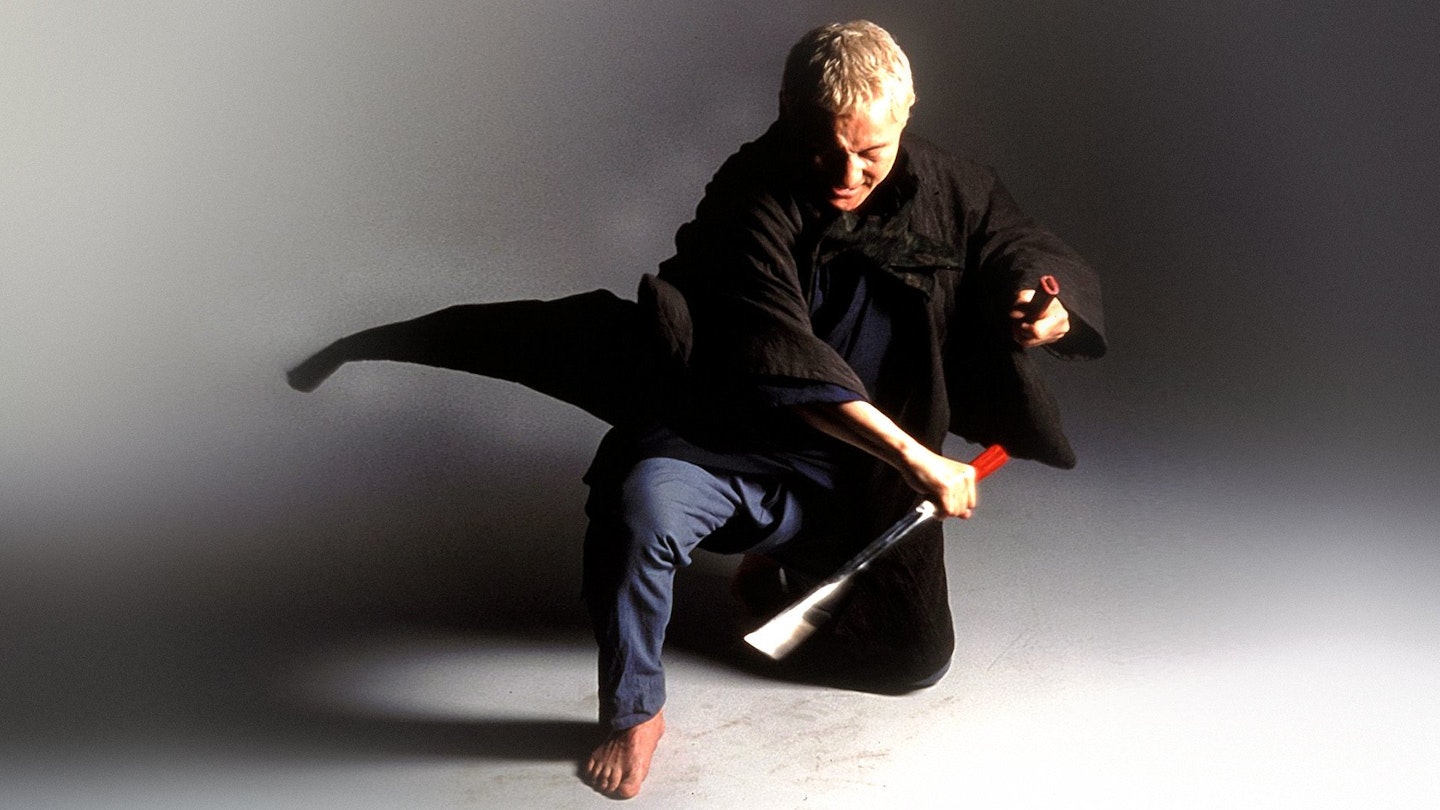The chambara, or swordplay film, has been a staple of Japanese cinema since Makino Shozos The Fight At Honno Temple in 1908. Employing the duelling techniques developed in Kabuki theatre, these samurai and ronin adventures have considered such themes as duty and honour, while also utilising their period setting to explore contemporary issues.
Just as Hollywood churned out countless B Westerns, so the Japanese studios of the 60s produced increasingly violent low-budget chambara for the youth market. Some heroes like Kyoshiro Nemuri and Hanzo the Blade are barely known in this country, but The Lone Wolf & Cub and Zatoichi are familiar thanks to the Warrior Films video collection.
However, little in the 26 Zatoichi vehicles that starred Shintaro Katsu can compare to the polish and panache of Takeshi Kitanos magnificent remake. In addition to turning in a blond-dyed display of Zen contemplation and vicious precision, actor-director Kitano combines cartoonish violence, broad pantomime and subtle asides with arresting visuals and exquisite period details to produce a piece of cult pulp that drips with arthouse style.
This is clearly his homage to a formative influence, in much the same way that Crouching Tiger, Hidden Dragon celebrated the martial arts movies of Ang Lees youth. But while the severed limbs and gushing arteries are very much in evidence, whats so impressive about Zatoichi is the number of references it makes to Japans master filmmakers.
The low-angle shots are reminiscent of Yasujiro Ozu; the sacrifices made by a selfless geisha recall the dramas of Kenji Mizoguchi; the effortless shifts in tone and quixotic intensity of the central character are worthy of Kon Ichikawa; the scale and pacing are pure Akira Kurosawa; the meticulous composition echoes Teinosuke Kinugasa; and the mistrust of wealth and power and the empathy with the under-classes reflect the concerns of Nagisa Oshima and Shohei Imamura.
Yet this isnt a pretentious scrapbook of bygone issues and styles. Its a complex and slow-burning clash between masterless samurai and lawless yakuza, which is as likely to meander into a slapstick set-piece as explode into visceral violence. Katsumi Yanagishimas photography is outstanding, while Keiichi Suzukis percussive score informs such contrasting scenes as the peasants toiling in their field to the barnstorming festival finale, in which the cast join the dance troupe Stripes for a Busby Berkeley-like production number.
